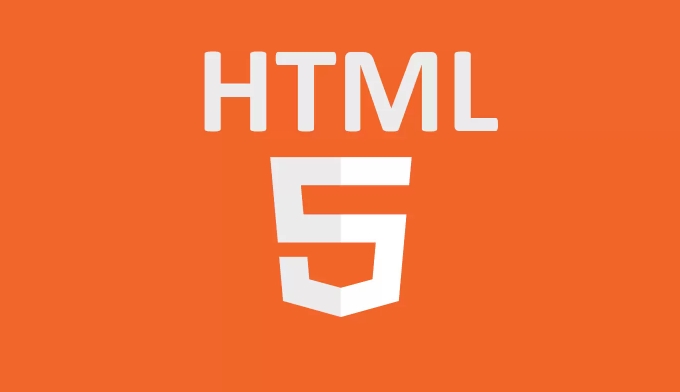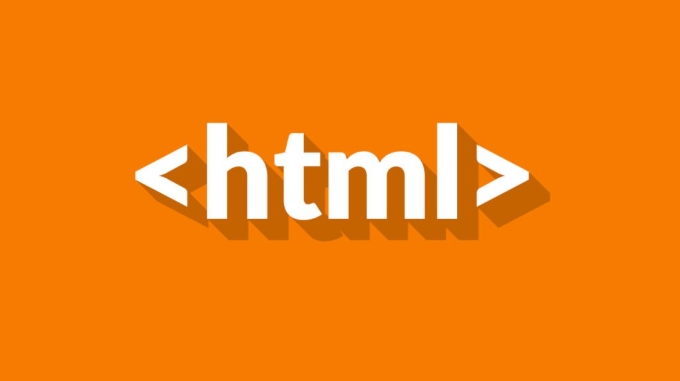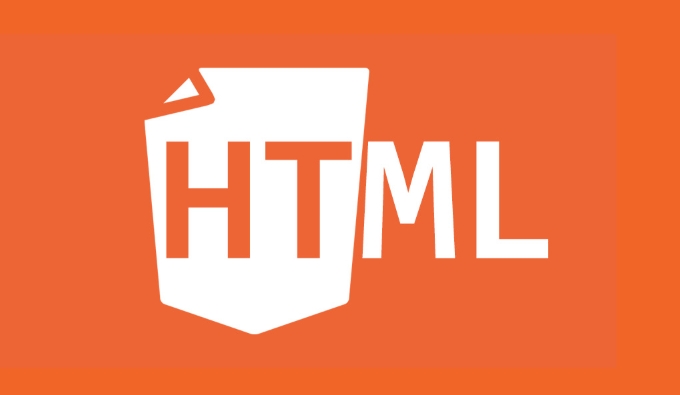To add Favicon and website icons to a web page, use the <link> tag of HTML and reference it in the
area. 1. Select the appropriate icon format (such as .ico, PNG, or SVG) and place it in the correct path; 2. Add basic Favicon links, such as <link rel="icon" href="/favicon.ico" type="image/x-icon">; 3. For Apple devices, add Apple Touch Icon, such as <link rel="apple-touch-icon" href="/apple-touch-icon.png"> and specify multi-size adaptations; 4. For other platforms and PWA support, use manifest.json to define icon collections and reference them through <link rel="manifest" href="/site.webmanifest"> to achieve a more comprehensive icon configuration.
It is actually quite simple to add Favicon and website icons to the web page, mainly using the HTML <link> tag. The key is to choose the icon format and size and quote it correctly in the page .
 ` tags." />
` tags." />Why Favicon and Site Icons are needed
Favicon is a small icon displayed on the browser tab and can also be seen in the bookmark bar and history. Site Icons is more broadly defined, including the icons displayed when the mobile terminal is added to the home screen. Although these small icons are inconspicuous, they can improve brand recognition and make the website more professional.
 ` tags." />
` tags." /> Now many browsers will request /favicon.ico by default. Even if you don't write the <link> tag, it will try to load the icon in this path. However, for compatibility and custom control, it is best to manually add the <link> tag.
How to add Favicon to the webpage
The most basic way is to add a line in the area of ??HTML:
 ` tags." />
` tags." /><link rel="icon" href="/favicon.ico" type="image/x-icon">
This line of code tells the browser where to find the icon file. A common practice is to place the .ico file in the root directory of the website, so that the path is simple and clear.
If you are using PNG or SVG format, you can also change it to the corresponding type , such as:
<link rel="icon" href="/favicon.png" type="image/png"> <link rel="icon" href="/favicon.svg" type="image/svg xml">
The advantage of SVG icons is that they can scale without deforming, but old browsers may not support them.
How to set mobile icons (Apple Touch Icon)
When users add web pages to the home screen, they will look for an icon called Apple Touch Icon. You can add this:
<link rel="apple-touch-icon" href="/apple-touch-icon.png">
The default size is 180x180 pixels, suitable for iPhone HD screens. If you want to adapt to different resolutions, you can add multiple versions:
-
<link rel="apple-touch-icon" sizes="120x120" href="/touch-icon-120.png"> -
<link rel="apple-touch-icon" sizes="180x180" href="/touch-icon-180.png">
Apple also supports precomposed icons. If you don't want the system to gloss the icons, you can use:
<link rel="apple-touch-icon-precomposed" href="/touch-icon-precomposed.png">
But nowadays, it is enough to use the standard apple-touch-icon directly.
Other platforms and modern website icon configurations
Some platforms (such as Windows 10 tile) or PWA (Progressive Web Application) require more icon configuration. At this time, you can consider using tools to generate a complete icon package, including various sizes and configuration files.
For example, PWA also needs a manifest.json file to define the icon collection:
{
"icons": [
{
"src": "/icon-192x192.png",
"sizes": "192x192",
"type": "image/png"
},
{
"src": "/icon-512x512.png",
"sizes": "512x512",
"type": "image/png"
}
]
}Then add:
<link rel="manifest" href="/site.webmanifest">
This not only defines icons, but also sets advanced functions such as theme colors and splash screens.
Basically that's it. Although it seems a bit too many, in fact, just prepare a few pictures and copy and paste a few lines of code. The key is not to miss the support of mainstream devices and platforms, otherwise users may see the default icon or simply do not have the icon.
The above is the detailed content of Adding favicons and site icons using HTML `` tags.. For more information, please follow other related articles on the PHP Chinese website!

Hot AI Tools

Undress AI Tool
Undress images for free

Undresser.AI Undress
AI-powered app for creating realistic nude photos

AI Clothes Remover
Online AI tool for removing clothes from photos.

Clothoff.io
AI clothes remover

Video Face Swap
Swap faces in any video effortlessly with our completely free AI face swap tool!

Hot Article

Hot Tools

Notepad++7.3.1
Easy-to-use and free code editor

SublimeText3 Chinese version
Chinese version, very easy to use

Zend Studio 13.0.1
Powerful PHP integrated development environment

Dreamweaver CS6
Visual web development tools

SublimeText3 Mac version
God-level code editing software (SublimeText3)
 Implementing Clickable Buttons Using the HTML button Element
Jul 07, 2025 am 02:31 AM
Implementing Clickable Buttons Using the HTML button Element
Jul 07, 2025 am 02:31 AM
To use HTML button elements to achieve clickable buttons, you must first master its basic usage and common precautions. 1. Create buttons with tags and define behaviors through type attributes (such as button, submit, reset), which is submitted by default; 2. Add interactive functions through JavaScript, which can be written inline or bind event listeners through ID to improve maintenance; 3. Use CSS to customize styles, including background color, border, rounded corners and hover/active status effects to enhance user experience; 4. Pay attention to common problems: make sure that the disabled attribute is not enabled, JS events are correctly bound, layout occlusion, and use the help of developer tools to troubleshoot exceptions. Master this
 Configuring Document Metadata Within the HTML head Element
Jul 09, 2025 am 02:30 AM
Configuring Document Metadata Within the HTML head Element
Jul 09, 2025 am 02:30 AM
Metadata in HTMLhead is crucial for SEO, social sharing, and browser behavior. 1. Set the page title and description, use and keep it concise and unique; 2. Add OpenGraph and Twitter card information to optimize social sharing effects, pay attention to the image size and use debugging tools to test; 3. Define the character set and viewport settings to ensure multi-language support is adapted to the mobile terminal; 4. Optional tags such as author copyright, robots control and canonical prevent duplicate content should also be configured reasonably.
 Best HTML tutorial for beginners in 2025
Jul 08, 2025 am 12:25 AM
Best HTML tutorial for beginners in 2025
Jul 08, 2025 am 12:25 AM
TolearnHTMLin2025,chooseatutorialthatbalanceshands-onpracticewithmodernstandardsandintegratesCSSandJavaScriptbasics.1.Prioritizehands-onlearningwithstep-by-stepprojectslikebuildingapersonalprofileorbloglayout.2.EnsureitcoversmodernHTMLelementssuchas,
 HTML for email templates tutorial
Jul 10, 2025 pm 02:01 PM
HTML for email templates tutorial
Jul 10, 2025 pm 02:01 PM
How to make HTML mail templates with good compatibility? First, you need to build a structure with tables to avoid using div flex or grid layout; secondly, all styles must be inlined and cannot rely on external CSS; then the picture should be added with alt description and use a public URL, and the buttons should be simulated with a table or td with background color; finally, you must test and adjust the details on multiple clients.
 How to associate captions with images or media using the html figure and figcaption elements?
Jul 07, 2025 am 02:30 AM
How to associate captions with images or media using the html figure and figcaption elements?
Jul 07, 2025 am 02:30 AM
Using HTML sums allows for intuitive and semantic clarity to add caption text to images or media. 1. Used to wrap independent media content, such as pictures, videos or code blocks; 2. It is placed as its explanatory text, and can be located above or below the media; 3. They not only improve the clarity of the page structure, but also enhance accessibility and SEO effect; 4. When using it, you should pay attention to avoid abuse, and apply to content that needs to be emphasized and accompanied by description, rather than ordinary decorative pictures; 5. The alt attribute that cannot be ignored, which is different from figcaption; 6. The figcaption is flexible and can be placed at the top or bottom of the figure as needed. Using these two tags correctly helps to build semantic and easy to understand web content.
 How to handle forms submission in HTML without a server?
Jul 09, 2025 am 01:14 AM
How to handle forms submission in HTML without a server?
Jul 09, 2025 am 01:14 AM
When there is no backend server, HTML form submission can still be processed through front-end technology or third-party services. Specific methods include: 1. Use JavaScript to intercept form submissions to achieve input verification and user feedback, but the data will not be persisted; 2. Use third-party serverless form services such as Formspree to collect data and provide email notification and redirection functions; 3. Use localStorage to store temporary client data, which is suitable for saving user preferences or managing single-page application status, but is not suitable for long-term storage of sensitive information.
 What are the most commonly used global attributes in html?
Jul 10, 2025 am 10:58 AM
What are the most commonly used global attributes in html?
Jul 10, 2025 am 10:58 AM
class, id, style, data-, and title are the most commonly used global attributes in HTML. class is used to specify one or more class names to facilitate style setting and JavaScript operations; id provides unique identifiers for elements, suitable for anchor jumps and JavaScript control; style allows for inline styles to be added, suitable for temporary debugging but not recommended for large-scale use; data-properties are used to store custom data, which is convenient for front-end and back-end interaction; title is used to add mouseover prompts, but its style and behavior are limited by the browser. Reasonable selection of these attributes can improve development efficiency and user experience.
 Implementing Native Lazy Loading for Images in HTML
Jul 12, 2025 am 12:48 AM
Implementing Native Lazy Loading for Images in HTML
Jul 12, 2025 am 12:48 AM
Native lazy loading is a built-in browser function that enables lazy loading of pictures by adding loading="lazy" attribute to the tag. 1. It does not require JavaScript or third-party libraries, and is used directly in HTML; 2. It is suitable for pictures that are not displayed on the first screen below the page, picture gallery scrolling add-ons and large picture resources; 3. It is not suitable for pictures with first screen or display:none; 4. When using it, a suitable placeholder should be set to avoid layout jitter; 5. It should optimize responsive image loading in combination with srcset and sizes attributes; 6. Compatibility issues need to be considered. Some old browsers do not support it. They can be used through feature detection and combined with JavaScript solutions.






